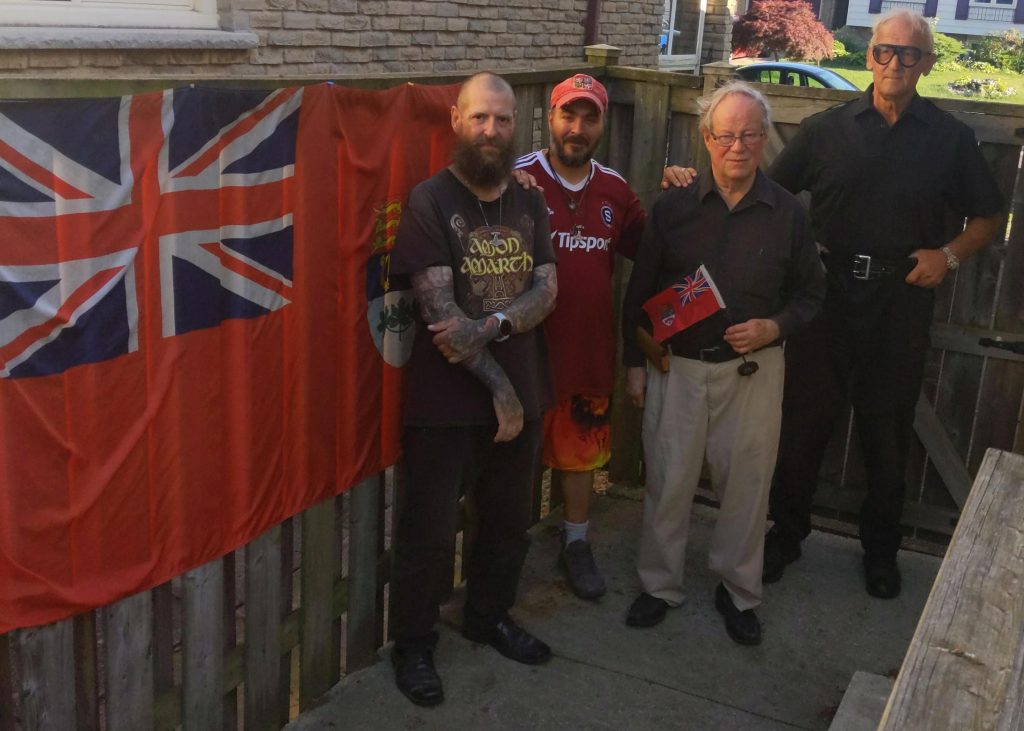CRIME WATCH: Musician From Ghana who led ‘simple life’ gets 15 years for smuggling 12 kg of heroin
[Inquiring minds might wonder just how this drug smuggling Ghanaian gained entry into Canada in the first place.]
His sentencing was delayed by two years ‘due to the backlog of demands’ for enhanced pre-sentence reports from social workers
Author of the article:
By Chris Lambie
Published Jul 03, 2025

A Canadian musician who returned to Toronto from his birthplace of Ghana with millions of dollars’ worth of heroin hidden inside false walls of his suitcases has been sentenced to 15 years in prison for what a court-appointed social worker called “an aberration of an otherwise ‘simple life.’”
A jury found Shadrack Oppong-Kyereme guilty in February 2024 of importing 12.2 kilograms of heroin into Canada two years earlier. But Oppong-Kyereme’s sentencing was delayed “due to the backlog of demands” for enhanced pre-sentence reports from social workers, according to a recent decision from Ontario’s Superior Court of Justice.
“Whether or not Mr. Oppong-Kyereme was vulnerable or gullible when he took those suitcases, it does not decrease his moral blameworthiness,” wrote Justice Judy Fowler Byrne.
“Mr. Oppong-Kyereme, to his credit, takes full responsibility for his actions. He understands the gravity of the crime, but also recognizes the impact it can have on others whom he will never meet.”
Oppong-Kyereme, now 39, arrived at Toronto Pearson International Airport on a flight from Addis Ababa, Ethiopia, on Feb. 26, 2022.
Article content
“He had just returned from a trip to Ghana, where he attended the funeral of an uncle, and Malawi, where he operated a juice and fruit store,” said the judge. “He was directed to the secondary inspection area, where his two pieces of luggage were x-rayed. Having detected something odd on the x- ray, the (Canada Border Services Agency) officer took apart one piece of luggage by opening a false side and found a package that contained suspected illegal substances.”
Oppong-Kyereme was arrested after it tested positive for narcotics. “The heroin was found inside eight separate packages, four in each of the two suitcases,” said the June 26 decision, which notes the drugs were worth between $736,000 and $2,453,360.
He “has been married for two years, but his wife is unaware of his present circumstances,” Jacquie Pemberton, a social worker, said in Oppong-Kyereme’s Feb. 19, 2025, pre-sentence report.
Oppong-Kyereme “has three children from a prior relationship who are eight, 12 and 14 years old. He has parenting time on alternate weekends and during the week and is a constant figure in his children’s lives,” said the judge’s decision.
“When Mr. Oppong-Kyereme addressed the court at his sentencing hearing, his main concern was about his ongoing ability to financially support his children.”
A
Oppong-Kyereme’s father was also “unaware of his charges,” said the decision.
“He has asked that his mother not be contacted for the pre-sentencing report because it causes her to become overwhelmed.”
Oppong-Kyereme immigrated to Canada when he was 17 years old to live with his father, stepmother and their two children, said the decision. “He became a Canadian citizen in 2003. Unfortunately, he did not get along with his stepmother and moved out when he was 18 years old.”
Oppong-Kyereme has worked for himself and an employer, but a 2023 car accident sidelined him. “He is currently receiving insurance benefits as a result of the accident and draws on student loans that he has received,” said the decision.
Oppong-Kyereme, who finished high school in Canada, “recently completed an online course on cyber security and hopes to work in this area,” it said.
Oppong-Kyereme is also a musician, said the decision. “He writes and performs Afrobeats, reggae and high life (a genre specific to Ghana). He made his first professional recording in Ghana in 2010. At times he receives compensation for his music, depending on what platform his music is streamed on.”
Oppong-Kyereme “has a few good friends who describe him as quiet, humble and supportive,” said the decision. “His friends agree he was taken advantage of by his trusting nature. His sister was very surprised by the charges as he was never involved in anything like that before. Mr. Oppong-Kyereme blames his easy-going personality for being ‘stupid’ as he stated, and trusting his friend in Malawi who asked him to take his suitcases to Canada.”
Before the smuggling conviction, his criminal record consisted of one impaired driving conviction from a decade back.
The Crown argued Oppong-Kyereme should get 16 years behind bars. His lawyer suggested a sentence of 10 years would be more appropriate.
The judge noted heroin’s “addictive” and “destructive” nature.
“Heroin trafficking has been described as a ‘despicable’ crime and one that tears at the very fabric of our society,” Fowler Byrne said.
“Even if an illegal drug courier is found to be wilfully blind or naive, it is not a mitigating circumstance.”












